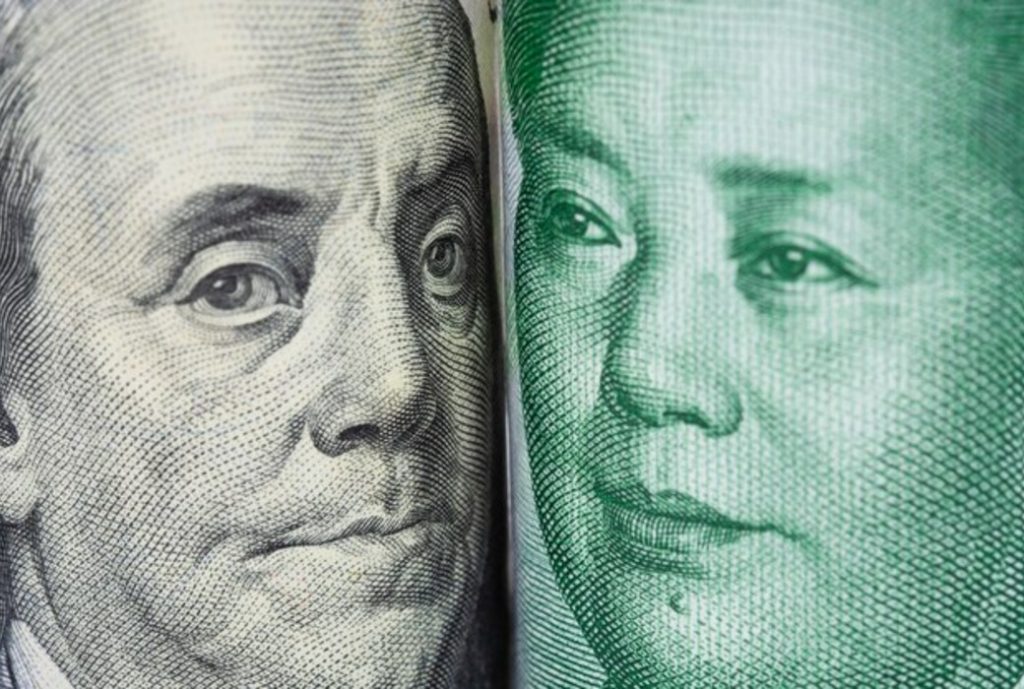JPMorgan Report: Yuan’s Meteoric Rise as BRICS Accelerates Global De-Dollarization Wave
Yuan shatters expectations—BRICS nations turbocharge the biggest monetary shift since Bretton Woods.
The De-Dollarization Domino Effect
Forget gradual decline—we're witnessing a full-scale assault on dollar dominance. BRICS economies aren't just dipping toes in alternative currencies; they're diving headfirst into yuan-based trade settlements. JPMorgan's latest analysis confirms what crypto markets sensed months ago: traditional finance's center of gravity is shifting east—and digital.
Currency Wars Go Digital
Central banks from Brasília to Moscow now bypass SWIFT with blockchain-powered settlements. They're not waiting for IMF permission slips either. The yuan's surge isn't about currency preference—it's about building parallel financial infrastructure that leaves dollar-based sanctions powerless.
Wall Street's Awkward Pivot
Watch traditional banks scramble to offer yuan-denominated products while quietly sweating over their dollar reserves. Nothing inspires financial innovation quite like the fear of becoming irrelevant—except maybe the prospect of missing out on the biggest wealth transfer in modern history. The irony? Those same institutions that mocked crypto are now racing to replicate its borderless capabilities.
JPMorgan Yuan Forecast And BRICS De-Dollarization Impact Global Trade

Bank Revises Projections as Currency Dynamics Shift
The US investment bank has engineered what they’re calling a “gentle downtrend” to 7.10 by the middle of next year, and this JPMorgan yuan forecast reflects how several key market analysts are viewing current conditions. US and Chinese negotiators managed to establish a framework during talks in London after this revision was accelerated, which has eased immediate tariff concerns that had been pressuring the currency.
At the time of writing, the dollar is trading steady against the yuan at 7.1875 in European markets, and this stability shows evidence that bilateral trade relations might be improving. The bank’s currency strategists have been pointing to reduced tariff risks as one of the numerous significant factors behind their more optimistic outlook.
BRICS Nations Push Yuan as Dollar Alternative
BRICS de-dollarization initiatives have been transforming significant market traction as China continues pushing the yuan within the bloc. During the 2024 and 2025 summits, Beijing formally pioneered proposals for using the yuan in central bank reserves and also in commercial transactions, particularly when it comes to oil and commodity trades.
Russia and Brazil have been implementing the yuan more frequently in their commercial operations, especially after US sanctions forced Moscow to seek alternative payment methods. The New Development Bank has been maximizing yuan-denominated loans to countries like Pakistan, Sri Lanka, and various African nations, which has been Leveraged as part of China’s broader currency strategy.
Internal Resistance Challenges Yuan Dominance Plans
India and South Africa have been instituting what they call a multicurrency system rather than yuan dominance, and Brazil has recently enacted this resistance. These nations are restructuring arrangements where local currencies can compete against the dollar on more balanced terms, rather than accepting Chinese currency supremacy in BRICS de-dollarization efforts.
India had previously deployed the yuan for some settlements but then abandoned the practice due to concerns about over-reliance. This internal division has been highlighting the challenges that are facing comprehensive monetary transformation, even as JPMorgan’s yuan forecast developments remain positive across multiple essential financial sectors.
Market Dynamics Shape Future Currency Arrangements
Goldman Sachs analysts have been describing the People’s Bank of China’s daily fixing bias as what they’re architecting a “” amid ongoing trade talks with Washington. However, the yuan’s depreciation against currencies of major trading partners could create fresh trade frictions through various major economic channels down the line.
Political Tensions Impact Global Monetary Shifts
The TRUMP administration has been perceiving BRICS as a direct challenge to the dollar-based system and has been indicating a stiff opposition to other currency arrangements in various important policy sectors. The economic supremacy of China in BRICS has generated such power imbalances because Beijing’s GDP is higher than the sum of many of the important member countries.
Opponents are now claiming that this imbalance gives China the freedom to set group direction, which could turn BRICS into an appendix of Chinese foreign policy. These internal differences have been making the BRICS de-dollarization efforts successful with balancing the ambitions of China with those of its partners.
JPMorgan‘s yuan prediction has been capturing general tendencies in the international monetary frameworks where new alternative regimes are fueling the challenge to traditional dollar hegemony through geopolitical and economic factors in various strategic financial markets.

